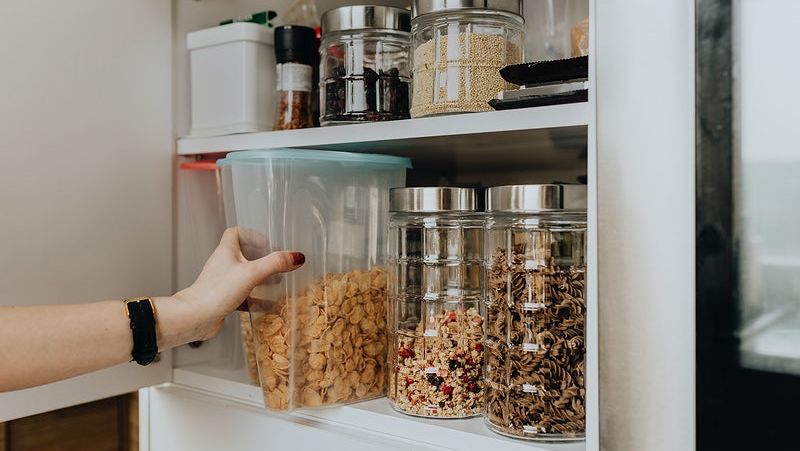Be Ill Prepared

Current evidence-based information regarding the management of Nausea and Vomiting of Pregnancy (NVP) indicates the better a woman understands the condition, learns management techniques ahead of time, and prepares various aspects of her life – even minimally – the better her chances for success.
Women can prepare their HCPs, family members, friends, and employers, as well as their physical and mental health, homes, vehicles, and work places so they can manage their symptoms effectively no matter where they are or who they are with.
This preparation allows women to live their lives as normally as possible while combating a condition that could take weeks to months to fully go away. Preparation can also range in scale and is tailored to women's preferences and degree of symptom severity – whether mild, moderate, or severe.
Preparation does not have to take a lot of work, but it does have significant reward. Women need to remember the goal of preparation is to minimize stress, anxiety, fear, and guilt, as well as the severity of symptoms by having a variety of options nearby and always available.
Background
Many researchers advocate for the early recognition and management of NVP, which has been shown to reduce the likelihood of severe physical and mental health complications. NVP tends to get worse after it starts, and its symptoms can become more difficult to control. Therefore, if women recognize it, visit their HCP, develop a plan, and are more prepared for it, they can potentially avoid these complications.
It does not matter if a woman has NVP for one day or 200 days, being prepared can help improve quality of life significantly, give women a better sense of control, and most importantly, help them enjoy their pregnancy the most they can until symptoms subside.
Preparation is not paranoia; it is women and their families putting themselves in the best position possible to combat early pregnancy-related symptoms and complications.

Sometimes the only thing standing between a more tolerable day and an incessant nausea/vomiting cycle may be as little as a few seconds. In some cases, women may be able to prevent severe nausea/vomiting when they are able to grab something to do, eat, drink, visualize, or listen to (that they know will likely work) and grab it/do it quickly.
At least one study documented that 75% of pregnant women surveyed experienced NVP an average of 35 days. This can feel manageable for a few days, but “winging it” can take a toll on fatigue, energy, mood, and mental health very quickly, depending on severity.
Further, nausea and vomiting lead to additional symptoms and complications (constipation, extreme fatigue, dehydration, headache, acid reflux, heartburn, etc); therefore, after a few days or maybe a few weeks, women will have to manage more than just nausea and vomiting – at the same time. Therefore, this cascade is more difficult to handle.
Ideally, women should learn about NVP prior to pregnancy or upon a positive pregnancy test. It is currently estimated that up to 90% of women will experience NVP-related symptoms to some degree. Women should start with:
Women should then learn current evidence-based research regarding management options for NVP, which includes lifestyle modifications, dietary changes, non-pharmacological options, and prescription medications.
Preparation Overview – Have a Plan
Women experience different severities of NVP. Preparation is therefore very individualized and can be tailored to work best for each woman. Some women may only need to prepare their car, while others will need to prepare their entire house/lives.
Women should think of having a “toolbox” and what options they would put in it. Everything they might need should be put in one generalized location with as much time saved as possible (for example, if women use tea to help them combat nausea, the mug, spoon, honey, sugar, or tea bag should already be out).
This toolbox could be different in the morning versus the evening. The toolbox may be small in the morning (bread, juice) but may need to be significantly larger in the evening (ice chips, gum, hard candy, ginger, visuals, music, medication, etc.), depending on when symptoms peak.
Preparation is not about having everything out and made (but can be), but as close to it as possible. Many women with NVP will suddenly get an urge to eat, and then to eat RIGHT NOW or they may gag/vomit. If women only relied on pretzels for the last few days, but suddenly a wave strikes and they do not want pretzels anymore, if there are no other immediate options available, this could result in more severe nausea and/or vomiting.
Further, some women may be at work, a social event, out shopping, or running errands, and get hit with a wave of nausea. The goal with NVP management is to prepare for as many different scenarios as possible, but also as easy as possible, with minimal effort – especially if women are trying to prepare and are currently nauseous.
Before Pregnancy/Positive Test
Risk Factors: Ideally, and as mentioned above, preparation starts well before pregnancy. Although it is difficult to predict which women will experience moderate to more severe NVP, there are risk factors that can provide some clues. If women have one or more of these risk factors, they may have higher odds of experiencing more severe symptoms, and should consider planning accordingly if possible.
Note: There are many women without risk factors who may also experience severe symptoms, as well as women with risk factors who may not experience NVP at all.
Prenatal Vitamins: Women can also prepare for NVP by taking prenatal vitamins prior to pregnancy. At least one study reported that women who took prenatal vitamins at least one month prior to pregnancy were less likely to suffer severe symptoms. The exact reason for this is unknown, but could be due to an increased level of vitamin B6 (B6) in the body.
Preemptive medication: According to a study presented at the 2013 National Pregnancy Sickness Support Conference, preemptive vitamin B6 and doxylamine may prevent severe NVP from recurring in a subsequent pregnancy (taken prior to symptoms). Women who had severe NVP in a prior pregnancy should talk to their HCP about preemptive (preventative) medication. Note: Women should never take supplemental B6 or doxylamine at any time without talking to their HCP first.
Stop marijuana use: It is possible that marijuana use before pregnancy is related to an increased risk of NVP. Women who stop using marijuana after learning they are pregnant (as opposed to before) may experience nausea and vomiting due to withdrawal (which can also be mistaken for NVP).
Underlying conditions: Women should see their HCP to determine if they have any underlying health conditions that could increase their risk of severe NVP, such as thyroid disorders, gastrointestinal disorders, acid reflux (heartburn), constipation, diabetes, or migraines; some of these conditions can be treated prior to pregnancy which could lessen NVP severity during pregnancy.
Health Care Provider
Women need to find an HCP who fully understands the condition and sympathizes with women who are experiencing it. NVP is still not properly understood or appreciated among all physicians, especially those who view it as simply self-limiting and something women just need to "get through" until it is over.
HCPs should also be familiar with treating the mental and emotional aspects of NVP, and not just the physical symptoms.
Further, some HCPs may only assess "clinical symptoms" which may include dehydration, weight loss, lab results, and electrolytes. However, many women without these symptoms can still be experiencing severe NVP, especially if they need to eat and drink constantly. These women still need medical help, despite stable clinical signs.

Women should talk to their HCP about the HCP's views regarding NVP, the options and support they provide women with severe or extreme symptoms, and how they prefer to manage or treat the condition in their patients.
Partners/Other Family Members
Partners and other family members of pregnant women need to understand this condition is real and can be utterly debilitating in some cases. Partners may have unrealistic expectations of this condition, and therefore these falsehoods should be corrected for the benefit of the pregnant woman in the family.
Partners should do their part by learning everything they can about NVP, just like a pregnant woman. When women and their partners/family members are working off the same page, women feel more supported, more understood, less frustrated, and have an additional resource they can count on when symptoms get too difficult to manage on their own.
Partners should prepare for the possibility that family dynamic may change. This change could last for just a few days to potentially months.

For women/partners who already have children – childcare, household errands and chores, school meetings, packing lunches, preparing meals, and taking children back and forth to school or other functions could all be affected, depending on when women experience peak severity and how they are able to manage and cope with their symptoms.
Older children should also be made aware (parental discretion) that morning and good night routines, travel to school, mealtimes, and play time may look different for a little while, or at least for a few hours every day. Again, these changes may only last a few days for some women, or much longer in others – there is no reliable way to predict NVP duration.
Partners/other family members should not expect women to remain as they were prior to NVP, managing all the same responsibilities. They should have the time and support to focus on just getting through their symptoms.
Unmanaged NVP can lead to many additional symptoms which could lead to complications regarding the woman's physical, mental, and emotional health.
Almost every topic in our NVP section has a "Partners/Support" section at the bottom of the page that directly addresses even minor roles a partner or other family member/support can have in helping women manage their NVP .
Employer
Based on how NVP symptoms come and go, peak and wane, and create many other associated symptoms, in many circumstances, women are forced to take sick leave.
Unfortunately for women who wish to keep their pregnancy private for as long as possible, NVP symptoms can begin as early as 4 weeks of pregnancy. Therefore, some women may feel forced to take leave instead of telling anyone else they are pregnant, or instead of requesting accommodations for the same reason.
Women may feel very uncomfortable telling their supervisor/boss they are pregnant. Due to this, some women may also continue to work their job through their symptoms, which can eventually take a physical and mental toll, leading to possible loss of productivity.
Although not all places of employment offer a woman a respectful/private way to do this, women should consider telling their direct supervisor/boss they are pregnant and are experiencing nausea and/or vomiting. Women can inform their supervisor they will do everything they can to remain at work, but may also require occasional sick leave/time off.
Further, and most importantly, there are reasonable accommodations employers can take that will help women combat and manage symptoms while at work.
Under U.S. federal law, the Pregnancy Discrimination Act requires employers (with 15 or more employees) to make accommodations for pregnant women. Although the Americans with Disabilities Act does not include pregnancy as a disability, experiencing moderate to severe NVP during pregnancy can be considered covered (read more).

Mental Health
The best way women can prepare their mental health is to prepare their lives the best the can for any possible change, manage their expectations through better information, learn what they can about the condition to alleviate fear and anxiety, and talk to their HCPs for recommendations regarding counseling and other forms of support.
Women should remember:
There is no need to be afraid of NVP, and in most cases, symptoms can be managed to a tolerable degree. Information and action can overcome fear, and many resources are available on this site, as well as discussions and support from family, friends, and HCPs.
Although most women experience NVP to some degree, extreme (hyperemesis gravidarum) is rare. Further, it is currently estimated that only about half of women with nausea will actually vomit.
NVP will not be their lives; it just may be their lives for a little while (or even not at all).
The condition does pass, no matter the severity. While on average, symptoms last until about 20 weeks of pregnancy, eventually life will go back to normal. It is just very difficult to predict when.
Women have help, they have support, and they do not need to go through any part of this process alone.
Women can read experiences from other women and read more about all the different management techniques to better mentally cope with this condition.
Home
Women with moderate to severe NVP will more than likely spend a lot of time at home – if they can. This is the area of women's lives they may be able to spend the most time preparing. Home is the best place to be the most comfortable, and women can do a lot to each particular room that will set them up for fast and easy management options.
The point of preparing various rooms in the house is so women do not have to fight a nausea wave in one room, only to have to get up and go into another room to get something to help them do it; or worse – to have to get up and go looking for something (especially if moving positions is a trigger).
Preparing as many rooms as possible may seem like a lot of work, but finding something relatively instantly could save the woman from a nausea/vomiting cycle that she will end up having a harder time trying to stop once it starts.
Kitchen Counter and/or Pantry
Women should find a spot on the kitchen counter or table and cordon it off, or clear off an easily reachable shelf in a cupboard or pantry. This is the place in the kitchen that will have everything that may be needed. There is no time wasted looking for broth, water, dry cereal, hard candy – it is all in one place, with plenty of options to choose from.

Examples of possible items (can also be separated into food and non-food items) (read Eating); women should only choose what they know to work or what they believe may work:
At least two clean empty mugs with a clean spoon in each one
Tea bags
Bottles of water
Sports drinks/coconut water
Sippy cup with a lid
Ginger Ale/Lemon-Lime soda
Chicken broth (cubes; canned; or bagged, unopened)
Straws
Sparkling water
Honey
Spices: Ginger powder, cinnamon, salt
Sugar cubes
Energy balls or granola bars
Peanuts, almonds, walnuts, cashews, pistachios
Crackers
Bananas
Hard candy/suckers
Snack-sized Applesauce
Rice sock with its own mug (to heat)
Dry cereals
Instant oatmeal packets
Canned/boxed soups
Instant rice
Bread/Rolls
Potato chips/crisps
Small, washed whole potatoes (to quickly microwave)
Refrigerator and Freezer
Women should keep the refrigerator stocked with any "NVP item" that needs to remain cold. Fruit can be sliced up ahead of time, as well as anything else that can remain cold but could also be reheated quickly in the microwave (plain noodles; plain, dry pancakes, etc.)

Refrigerator:
Apple slices (coated with small amount of lemon juice or cinnamon/sugar)
Apple sauce
Cheese sticks
Milk
Yogurt
Bottles of water
Sports drinks
Citrus slices (lemon, lime, orange, grapefruit)*
Pre-cut ginger (storing directions here)
Pre-cooked noodles, mashed potatoes, pancakes, or any easy carbohydrate that can be made ahead of time and placed in the fridge (eat within 2 to 3 days of preparing)
Freezer:
Ice cubes
Juice ice cubes (Gatorade®, Powerade®)
Ice chips
Half-filled bottles of water (see Drinking)
Frozen fruit
Ice cream or frozen yogurt (try basic vanilla first)
Rolls (freezer aisle type; to take one out and pop in the oven if nausea allows)
Frozen dinner meals (for other family members)
Italian ices (various citrus flavors)*
Popsicles (Pedialyte®, citrus flavors)*
*If women suffer from acid reflux as a primary cause or contributing factor to their NVP, citrus can make it worse.
Bathroom
Preparing the bathroom can set women up for the long-haul if necessary. This also allows women privacy if they do not want a family member coming in very often to provide them with something; preparation also helps in women who regularly spend nights in the bathroom.
One or more of the following items can be stocked and set up in the bathroom, so women remain as comfortable as possible for as long as possible.
Separate bath or hand towels (that no one else touches so they are always there; use a different color)
Change of clothes (comfy shirts, pants, extra pair of socks)
Headbands
Hair ties
Face wipes
Bottles of water
Ginger ale or lemon-lime soda
Hard candy
Baking soda (see Vomiting)
Small paper cups
Several inexpensive toothbrushes
Chapstick
Cotton ball and essential oils (see Aromatherapy)
Glasses/Contacts (including case and solution)
Tissues
Straws
Fidget spinner/rubber band (Distractions)
Disinfecting wipes
Deodorizer
Candle (keep it safe)
Small portable fan (or larger one if needed)
Small trash can with unscented trash bags
Any medication needed
Blanket
Pillow(s)
Ultrasound photo/inspirational quotes (for wall)
Bedroom
Women should keep these items on their dresser or off in a corner where no one else will touch them. Some of these items will likely also be in other rooms. Some women may want to wander around or try different rooms just to remain distracted.
Extra sheet (flat sheets are easier in a hurry)
Extra pillows (to try sitting up in bed as well as lying flat)
Extra pillowcase
At least two towels
Change of clothes already out (some women get cold during NVP, some get hot)
Mobile devices
Device chargers
Books
Fidget spinner
Bottle of water
Sippy cup with lid
Ginger ale/Lemon-Lime soda
Sparkling water
Straws
Crackers
Crust cookies
Hard candy
Mints
Any other food item
Hair ties
Tissues
Essential oils/cotton balls
Small lined trash can
Vomit bags
Any medication needed
A clear and safe pathway to the bathroom
Inspirational items: baby onesie, ultrasound photo, quotes, pictures

Car
Women should keep a few items in a small bag in the glove compartment, middle compartment, or in a small box on the passenger’s seat – as long as it is reachable, contains items needed, and can be reached safely. If women travel frequently in more than one car, both vehicles should be stocked. In women who carpool, they can prepare their purse or a backpack and bring it with them, or ask a friend to keep their car stocked.
Vomit bags
Mouthwash (trial size)
Dry cereal
Granola bars
Hard candy
Bottles of water
Ginger-ale or lemon-lime soda
Mints
Face wipes
Chapstick
Small towel
Change of clothes
Traffic: Packing the car with items is critical if women tend to hit traffic often. Nausea/vomiting can hit at any point and pulling off is not always possible.
Hot days or long road trips: Women should consider packing a small cooler full of ice if they prefer things cold. his can also help keep drinks cold if the car sits all day in a hot parking lot; there is a cold drink waiting. Note: Women should not eat anything cold/perishable that has been sitting in a hot car and has not been placed in a sufficiently cold cooler.
Read additional tips for traveling and managing NVP .
Purse/Backpack
Women should keep the smallest items they need most in their purse at all times. Women may not leave their home very often if NVP is severe, but at least if they do, items are already in there and they do not have to think about it. If women have to go out often and they need more than their purse will allow, a small backpack may be a better option.
Mini battery-powered portable fan
Vomit bags
Ginger gum
Hard candy
Tissues
Chapstick
Travel-sized toothbrush, toothpaste, mouthwash
Tide-to-Go pen
Small bag of dry cereal
Crackers
Granola bars
Medication (if prescribed)
Desk, Breakroom, or Workstation
Working with NVP is a balancing act, between wanting to be prepared, as well as keeping the pregnancy a secret for a few more weeks. Completely changing a desk or workstation may alert an astute coworker. This is a risks and benefits decision. Women should change/prepare only what they are comfortable with, while making sure they are also doing enough to help them suffer less while at work.
Women should also consider letting only their direct supervisor know as soon as possible. Although there are certain risks with this, it could turn out to be incredibly beneficial as well. If a supervisor is aware (and reads our Employer section), they may be more willing to make additional changes to a woman’s work duties. Further, they may implement additional reasonable accommodations to help her through not only NVP, but her entire pregnancy.

Some of the items below should be in the woman’s purse already, but it can also be helpful to have all these items in a separate bag or desk at work, in the event a different purse is brought, or she runs out of an item.
Mug
Tea bags
Chicken bouillon cubes
Straws
Bottles of water
Sports drinks
Ginger-ale of lemon-lime soda
Crackers
Chapstick
Granola bars
Ginger gum
Hard candies
Vomit bags
Travel-sized toothbrush, toothpaste, mouthwash
Face-wipes/additional make-up (if wanted)
Mints
Small bags of dry cereal/granola/nuts
Tissues
Flat shoes
Extra change of clothes/uniform
Action
Women should only prepare various aspects of their lives they are comfortable with. Further, preparation does not need to take a lot of time or cost a lot of money; it just needs to be common sense.
Women should have nearby and ready any item, activity, or distraction technique that helps them through their symptoms. Women can become familiar with various management methods here.
Women should consider sharing their NVP experience (below), especially how they felt, how long it lasted, what may have caused or contributed to their symptoms, and anything they did that relieved symptoms, even if only temporarily.
Further, women should describe anything they did to prepare for their symptoms and how or if preparation helped them better manage their nausea and/or vomiting.
Resources
Nausea and Vomiting of Pregnancy: Committee Opinion 189; January 2018 (American College of Obstetricians and Gynecologists)
Morning Sickness: Nausea and Vomiting of Pregnancy (American College of Obstetricians and Gynecologists)
Pregnancy sickness (nausea and vomiting of pregnancy and hyperemesis gravidarum) (Royal College of Obstetricians and Gynecologists)